Order of Producing Kakejiku from a Customer in Switzerland Who Plays Aikidō

Order of Producing Kakejiku Hanging Scroll from the Customer in Switzerland Who Plays Aikidō | Rinpoe-mikiri Mounting Style.
We know it is quite sudden to ask, but does anybody know ‘aikidō’?
‘Aikidō’ is a martial art representing Japan together with jūdō, kendō, and karate.
Many people may feel the aikidō’s way of holding the opponent through the rational use of body is mysterious and cool.
This martial art, aikidō, is in fact popular not only in Japan but also around the world.
We received the order of producing kakejiku hanging scroll from a customer in Switzerland who plays such a popular martial art, aikido.
Contents
Order of Producing Kakejiku Hanging Scroll from a Customer in Switzerland Who Plays Aikidō
Surprisingly, the inquiry came in the form of a direct message on Instagram!!
We had so far received inquiries through messenger on Facebook other than Email. This was the first time we received the inquiry through Instagram.
It has become already a prerequisite for having business transactions with customers living overseas to deal with social media.
The inquiry is from the man who goes to a dōjō (training hall) of aikidō in the Lavaux district, Switzerland (or who is an owner of the dōjō. It is unknown which information is correct.) In the inquiry, he has requested to mount the work with the name of the dōjō drawn by a calligraphy teacher into kakejiku.
Following is the work the man asked us to mount into kakejiku.

What a wonderful dōjō’s name it is!!
It is said that aikidō has a principle of the mental philosophy, “to become one with ‘heaven and earth (nature)’”. The four kanji characters written in this work representing from the top ‘heaven’, ‘people’, ‘earth’ and ‘hall’ respectively, probably mean that ‘people’ standing between ‘heaven’ and ‘earth’ exercise the mental philosophy in the training ‘hall’ of dōjō.
Consultation about Mounting Style
We had consulted with the customer regarding how he wanted us to mount the work into kakejiku.
The consultation was done, of course, with the messenger on Instagram. (The function itself is rather convenient, though it was a bit hard to get used to.)
The customer requested us to mount the work with the rinpoe-mikiri style.
Since the rinpoe-mikiri was a rare mounting style, with which we had never been requested to mount works in Japan, but which the customer liked best, we decided to take on our first challenge.
We also offered several kinds of mounting fabric. Through the consultation with the customer, we decided to mount the work with the following fabric.
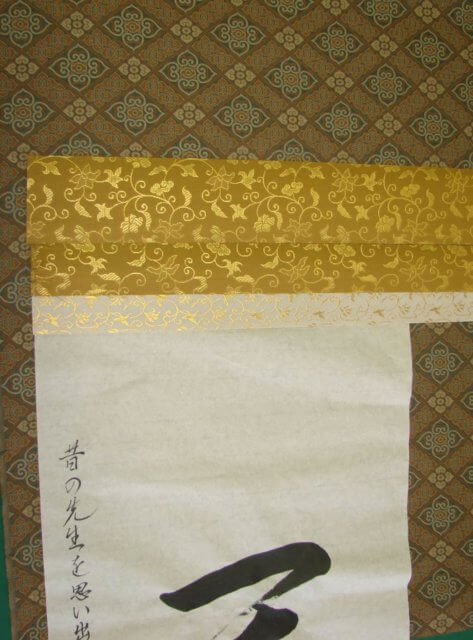
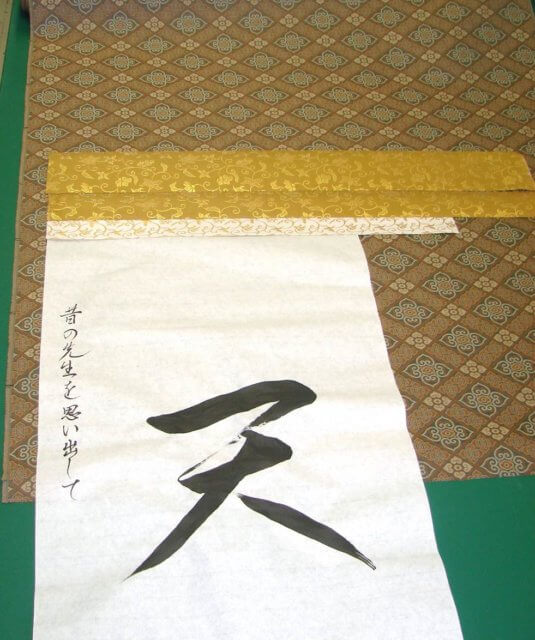
Following is the expected completion image of kakejiku.

Production Started
Following is the photograph of working on the production.
The Completion of Aikidō Kakejiku
We had repeatedly confirmed the size of the fabric, the order of the joint of the main work and the mounting fabric, etc throughout the production of the kakejiku, since this was the first time for us to mount an artwork with the rinpoe-mikiri style.
Following is the completed kakejiku.
This is the close-up picture of the mounting fabric which the customer chose. The fabric with the exquisite balance of austerity and gorgeousness highlights the fascination of the main work.
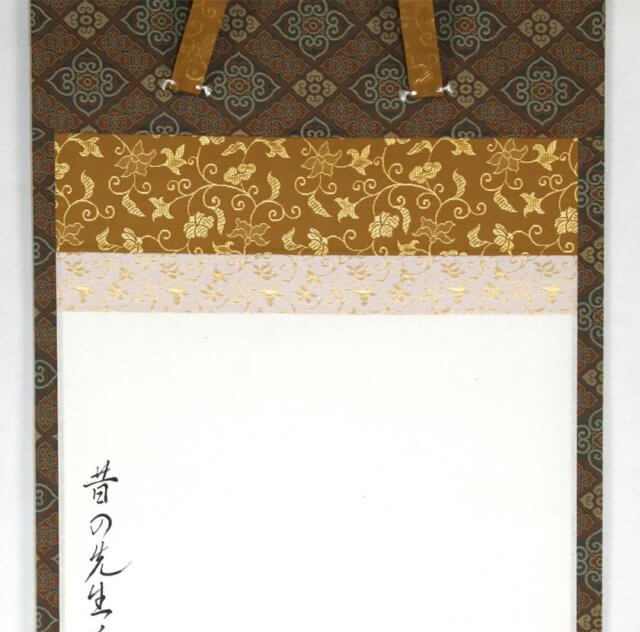
As soon as the Kakejiku was completed, we sent it to the customer in Switzerland.
The customer was really pleased with the kakejiku and hung it on the wall of the dōjō right away. Followings are a series of photographs posted on the customer’s Instagram, which were taken in between until the customer hung the kakejiku on the wall.
The kakejiku shown with this kind of background is Instagenic and rather stylish, with the appearance put in the paulownia box.
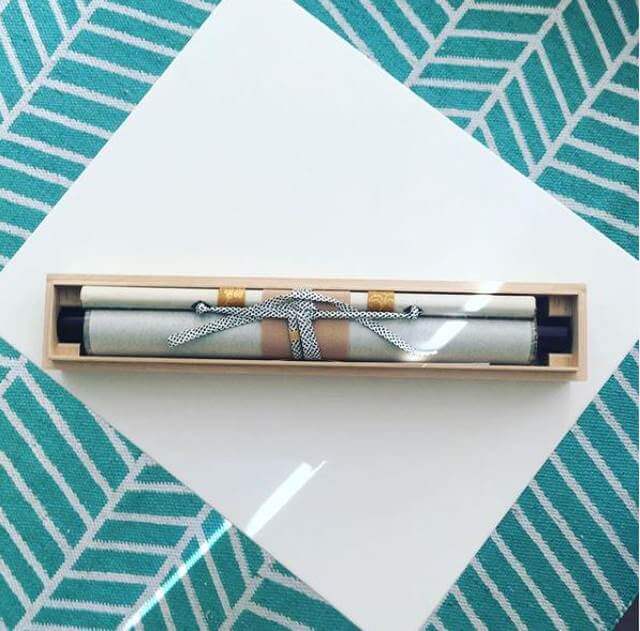
Following is the photograph of the kakejiku on the wooden floor taken before being hung on the wall. It enables us to feel how the customer loves the kakejiku that he has posted on his Instagram a series of photographs taken in bits and bites until the customer hung the kakejiku. (We are really pleased with that.)
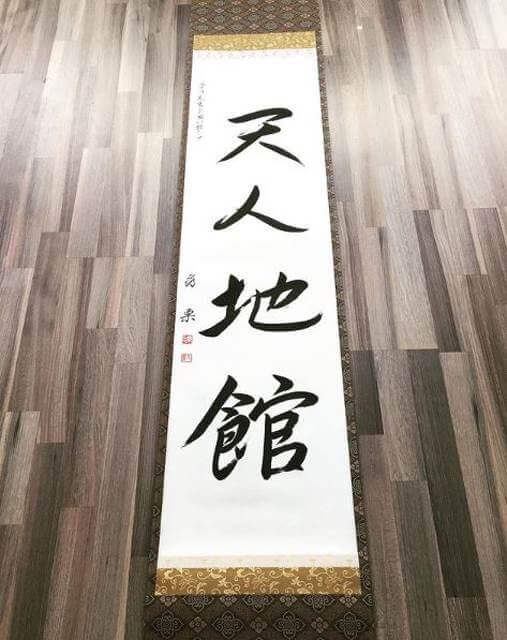
The kakejiku we produced is hung on the wall of the dōjō. This picture shows how a kakejiku hung on the wall covered with seemingly rock tiles looks like.
We have seldom seen the kakejiku hung on such a wall, which is rather novel.
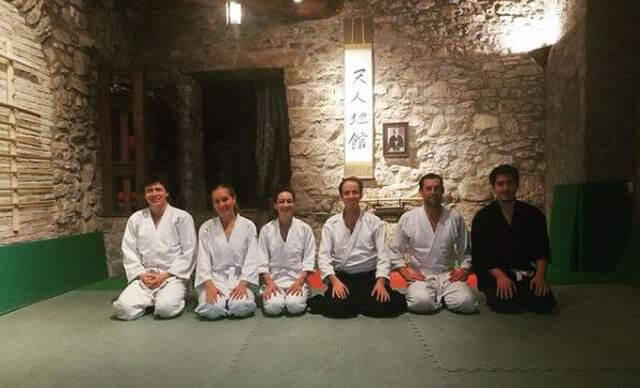
Little children also seem to come to this dōjō. Aikidō is tremendously popular overseas, which is a bit surprise for us.
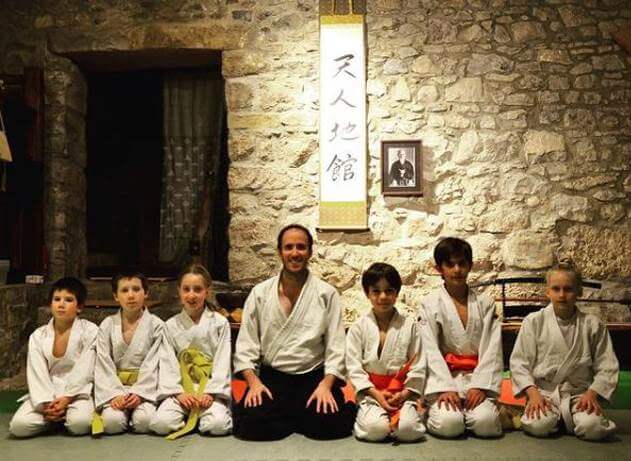
The space curiously mixed Japanese with Western is rather mysterious and cool.
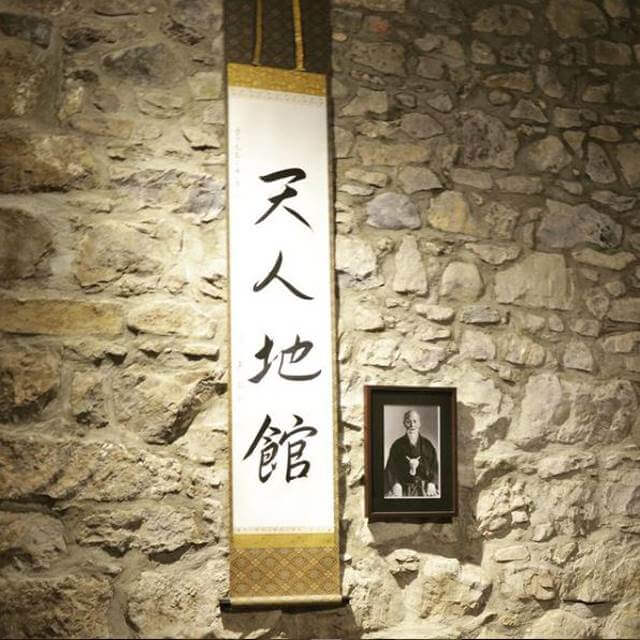
The customer seems to be really satisfied with the kakejiku.
Dear Nomura San,
Thank you so much for the scroll! It arrived today in good condition. The work is beautiful and perfect.
Thank you once again.
We are proud that our technology to produce kakejiku was of another help for those living overseas who need help.
We will accept any inquiries about the production of kakejiku hanging scroll from around the world.
Please feel free to contact us if you want any works on hand or your own works to be mounted into kakejiku.


